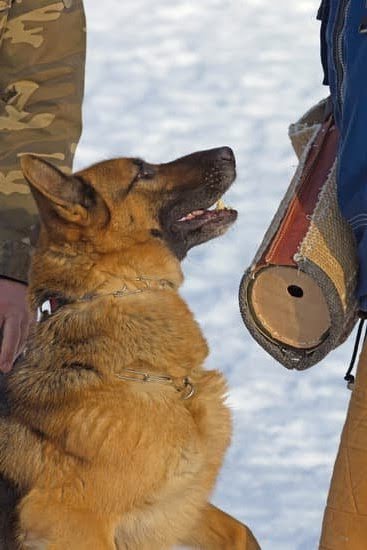Dog training is essential for a well-behaved and happy pet. In this article, we will explore the importance of training for dogs, the role it plays in their development and behavior, different training methods, factors to consider when determining the amount of training needed, setting realistic goals, and the impact of breed and age on training needs. We will also discuss ongoing training, tips for common behavioral issues, and resources for at-home training.
Training is a crucial aspect of responsible dog ownership. It not only helps in shaping a dog’s behavior but also strengthens the bond between the owner and their furry companion. From basic commands to advanced tricks, proper training can make a significant difference in how a dog responds to its environment and interacts with others.
When it comes to how much training a dog needs, there are several factors to take into consideration. These include the breed and age of the dog, their individual personality and temperament, as well as any specific behavioral issues that need to be addressed. Understanding these factors can help determine the amount of time and effort required for effective training.
Additionally, we will also delve into various training techniques that are most effective for different types of dogs, as well as tips for handling common behavioral issues such as excessive barking or separation anxiety. Whether you’re a new pet owner or have had dogs for years, this article will provide valuable insights into understanding your dog’s training needs and how to meet them effectively.
The Role of Training in a Dog’s Development and Behavior
Understanding the importance of dog training is crucial for any dog owner. Training plays a significant role in a dog’s development and behavior. It provides mental stimulation, establishes boundaries, and helps to create a strong bond between the dog and its owner. Training also ensures the safety of both the dog and those around it.
There are different types of training methods that can be utilized, each with its own effectiveness. Some common methods include positive reinforcement, clicker training, and obedience training. Dog owners should consider their dog’s temperament, energy level, and learning style when determining which method will work best for their pet.
When determining the amount of training needed for a dog, various factors should be considered. These may include the age, breed, and specific needs of the dog. For example, younger dogs may require more frequent training sessions than older dogs to establish good habits and behaviors. Additionally, certain breeds may have different learning abilities and motivations.
- Consistent training schedule
- Patience and persistence
- Utilizing positive reinforcement techniques
It is essential for dog owners to set realistic training goals and expectations for their pets. This involves understanding that every dog is unique and will progress at its own pace. Setting achievable goals will help prevent frustration for both the owner and the pet. Ongoing training is necessary to reinforce good behavior in dogs by providing regular practice sessions and using positive reinforcement techniques.
Different Types of Training Methods and Their Effectiveness
When it comes to training a dog, there are various methods that owners can utilize to teach and reinforce desired behaviors. Each method has its own effectiveness and may be suitable for different types of dogs and their unique personalities. It is important for dog owners to understand the different types of training methods available in order to determine which approach will work best for their canine companion.
Positive Reinforcement
Positive reinforcement is a popular training method that involves rewarding a dog for good behavior with treats, praise, or toys. This method focuses on encouraging the dog to repeat desirable actions through positive association and rewards. By using positive reinforcement, dogs can learn quickly and develop a strong bond with their owners.
Clicker Training
Clicker training is another effective method that uses a small device called a clicker to mark the precise moment when a dog performs a desired behavior. The sound of the clicker serves as a signal to the dog that they have done something correctly, followed by receiving a treat or reward. This method helps dogs understand exactly which action is being rewarded.
Alpha Dog or Dominance Training
This method focuses on establishing the owner as the “alpha” in the relationship with the dog and relies on techniques like physical corrections, leash corrections, or other aversive methods to assert dominance over the pet. However, this approach has been criticized by many trainers due to its potential negative impact on the emotional well-being of dogs and may lead to aggressive behavior.
It’s important for dog owners to consider their pet’s individual temperament and personality when choosing a training method. Not all techniques will work for every dog, so it’s essential to assess what works best for your specific furry friend.
Factors to Consider When Determining the Amount of Training Needed for a Dog
Temperament and Personality
One of the most important factors to consider when determining the amount of training needed for a dog is its individual temperament and personality. Some dogs may be naturally more obedient and eager to please, requiring less intensive training, while others may be more independent or stubborn, requiring more time and patience during training sessions. Understanding your dog’s unique personality can help you tailor your training approach to best suit their needs.
Previous Training and Socialization
Another factor to consider is your dog’s previous training and socialization experiences. A well-socialized dog that has received basic obedience training as a puppy may require less ongoing training compared to a dog with little to no previous training history. It’s important to take into account your dog’s past experiences and any potential gaps in their training that need to be addressed in order to determine the appropriate amount of training needed.
Owner Commitment and Consistency
The commitment and consistency of the owner also play a significant role in determining the amount of training needed for a dog. Consistent practice, reinforcement, and clear communication from the owner are essential for successful training outcomes.
Additionally, the owner’s willingness to invest time, effort, and patience into their dog’s training will ultimately impact the overall effectiveness of the process. Inconsistent or sporadic training efforts can prolong the time it takes for a dog to learn new behaviors and commands.
Setting Realistic Training Goals and Expectations for Your Dog
When it comes to training your dog, it’s essential to set realistic goals and expectations. Whether you’re teaching basic commands or addressing behavioral issues, having a clear understanding of what can be achieved through training will help you and your dog make progress. Here are some tips for setting realistic training goals and expectations:
- Assess your dog’s current behavior: Before setting any training goals, assess your dog’s current behavior and obedience level. This will help you determine what areas need improvement and what goals are realistic for your dog.
- Identify specific behaviors to work on: Instead of setting vague goals like “improve obedience,” identify specific behaviors you want to address, such as jumping on guests or pulling on the leash during walks.
- Consider your dog’s breed and age: Different breeds and ages may require different training approaches and timelines. Take these factors into account when setting your training goals.
It’s also important to keep in mind that every dog is unique, so progress may vary from one dog to another. Be patient with your furry friend and celebrate small victories along the way. By setting realistic goals and maintaining consistent training, you can help your dog become a well-behaved member of the family.
The Impact of Breed and Age on the Training Needs of a Dog
The breed and age of a dog play significant roles in determining their training needs. Different breeds have been developed for various purposes, such as hunting, herding, or companionship.
Understanding the natural instincts and tendencies of specific breeds can help in tailoring a training program that is suitable for their temperament and energy level. For example, a Border Collie with a strong herding instinct may require more mental stimulation and purposeful activities to keep them engaged compared to a Pug, which may be more laid-back.
Similarly, age also affects the training needs of a dog. Puppies are like sponges, eagerly soaking up new information and experiences. It is crucial to begin socialization and basic obedience training at an early age to set the foundation for good behavior.
On the other hand, older dogs may have already developed certain habits or behaviors that will require patience and consistency to modify. Understanding these differences in how breed and age impact a dog’s ability to learn can help owners set realistic expectations and develop an effective training plan.
In addition to breed and age, individual differences among dogs also play a role in their training needs. Some dogs may be quick learners and eager to please, while others may be more independent or easily distracted.
Recognizing these variations can help in adjusting training techniques and methods accordingly to ensure successful learning outcomes for each dog. By taking into consideration the impact of breed and age on training needs, owners can develop tailored training plans that take into account these important factors for their canine companions.
| Breed Characteristics | Age Considerations |
|---|---|
| Understanding natural instincts | Puppies as sponges for learning |
| Tailoring training based on energy level | Modifying habits in older dogs |
| Recognizing individual differences | Setting realistic expectations |
The Benefits of Ongoing Training and Reinforcement for a Well-Behaved Dog
Dog training is an essential aspect of a dog’s development and behavior. It plays a crucial role in ensuring that dogs are well-behaved, obedient, and safe to interact with their owners and other people. Ongoing training and reinforcement contribute significantly to maintaining a well-behaved dog. Consistent training helps reinforce good behavior and prevents the development of undesirable habits or behaviors in dogs.
One of the benefits of ongoing training and reinforcement for a well-behaved dog is the establishment of a strong bond between the dog and its owner. Training sessions provide an opportunity for both the owner and the dog to communicate, understand each other, and build trust. This bond translates into a more fulfilling relationship, where the dog respects the owner’s authority and commands, leading to better obedience.
Furthermore, ongoing training helps keep a dog mentally stimulated and engaged. Dogs are intelligent animals that require mental stimulation to prevent boredom and destructive behavior. Regular training sessions give them the opportunity to learn new commands, tricks, or tasks, which provides mental enrichment. This not only keeps them physically active but also strengthens their cognitive abilities, leading to a well-balanced and contented dog. Therefore, ongoing training should be considered as an integral part of responsible dog ownership.
Training Tips and Techniques for Common Behavioral Issues in Dogs
Training is an essential part of a dog’s development and behavior. It helps them to understand and follow certain commands, as well as learning how to behave in different situations. In this section, we will discuss some training tips and techniques for common behavioral issues in dogs.
One common behavioral issue that many dog owners face is excessive barking. To address this, it’s important to understand the root cause of the barking. For instance, if the barking is due to boredom or anxiety, providing mental and physical stimulation through games and exercise can help reduce this behavior. Additionally, using positive reinforcement when your dog is quiet and ignoring them when they bark excessively can also be effective in curbing this behavior.
Another common issue is leash pulling during walks. This can be frustrating for both the dog owner and the dog itself. Using a front-clip harness can help discourage pulling as it redirects them back towards you, making it more difficult for them to pull ahead. Consistent training with positive reinforcement when your dog walks without pulling can also help reinforce good leash manners.
Aggression towards other dogs or people is another challenging behavior that may require professional assistance from a certified dog trainer or behaviorist. Understanding the triggers of aggression and using desensitization techniques can help modify this behavior over time.
| Behavioral Issue | Training Tips/Techniques |
|---|---|
| Excessive Barking | Provide mental/physical stimulation, use positive reinforcement, ignore excessive barking |
| Leash Pulling | Use front-clip harness, practice consistent training with positive reinforcement |
| Aggression | Seek professional assistance if needed, understand triggers of aggression, use desensitization techniques |
Resources and Tools for Dog Owners to Continue Their Dog’s Training at Home
In conclusion, the amount of training needed for a dog depends on various factors such as breed, age, and individual behavior. While some dogs may require more intensive training, others may pick up commands quickly. Understanding the importance of dog training is essential for a dog’s overall development and behavior. It not only enhances the bond between the dog and its owner but also ensures that the dog is well-behaved and safe in different environments.
There are various resources and tools available for dog owners to continue their dog’s training at home. These include online tutorials, books, videos, and professional trainers who offer one-on-one sessions. Consistency is key when it comes to ongoing training, as it reinforces good behavior while addressing any issues that may arise. Dog owners should set realistic goals and expectations for their pet, understanding that every dog learns at its own pace.
It’s important to remember that ongoing training is beneficial for maintaining a well-behaved dog. Regular reinforcement of commands and consistently addressing behavioral issues can lead to a happy and well-adjusted pet. By utilizing the right resources and tools, along with patience and perseverance, dog owners can ensure that their furry companions receive the necessary training they need to thrive in any environment.
Frequently Asked Questions
How Many Hours a Day Should You Train Your Dog?
The ideal amount of time to train your dog each day varies depending on the age, breed, and individual personality of your dog. Generally, short training sessions of 15-20 minutes, several times a day, are more effective than one long session.
Puppies and newly adopted dogs may have shorter attention spans, so training for 30 minutes to an hour per day broken into multiple sessions may be more appropriate.
What Are the 7 Basics of Dog Training?
The 7 basics of dog training are: positive reinforcement, consistency, patience, proper timing, setting realistic expectations, using clear cues and signals, and providing mental stimulation. Positive reinforcement involves rewarding desired behaviors with treats or praise to encourage them to continue. Consistency and patience are key in establishing routines and teaching new commands.
Proper timing refers to praising or correcting your dog at the exact moment they perform a behavior. Clear cues and signals help your dog understand what you want from them.
Is Dog Training Once a Week Enough?
Frequency is key in dog training – while once a week is better than nothing, it may not be enough for some dogs particularly puppies or those learning complex commands. More frequent training sessions help solidify learning and prevent regression in behavior by offering regular reinforcement for good behavior and correction for undesirable actions.
For most dogs, daily practice at home combined with weekly formal training classes will yield the best results.

Welcome to the blog! I am a professional dog trainer and have been working with dogs for many years. In this blog, I will be discussing various topics related to dog training, including tips, tricks, and advice. I hope you find this information helpful and informative. Thanks for reading!





